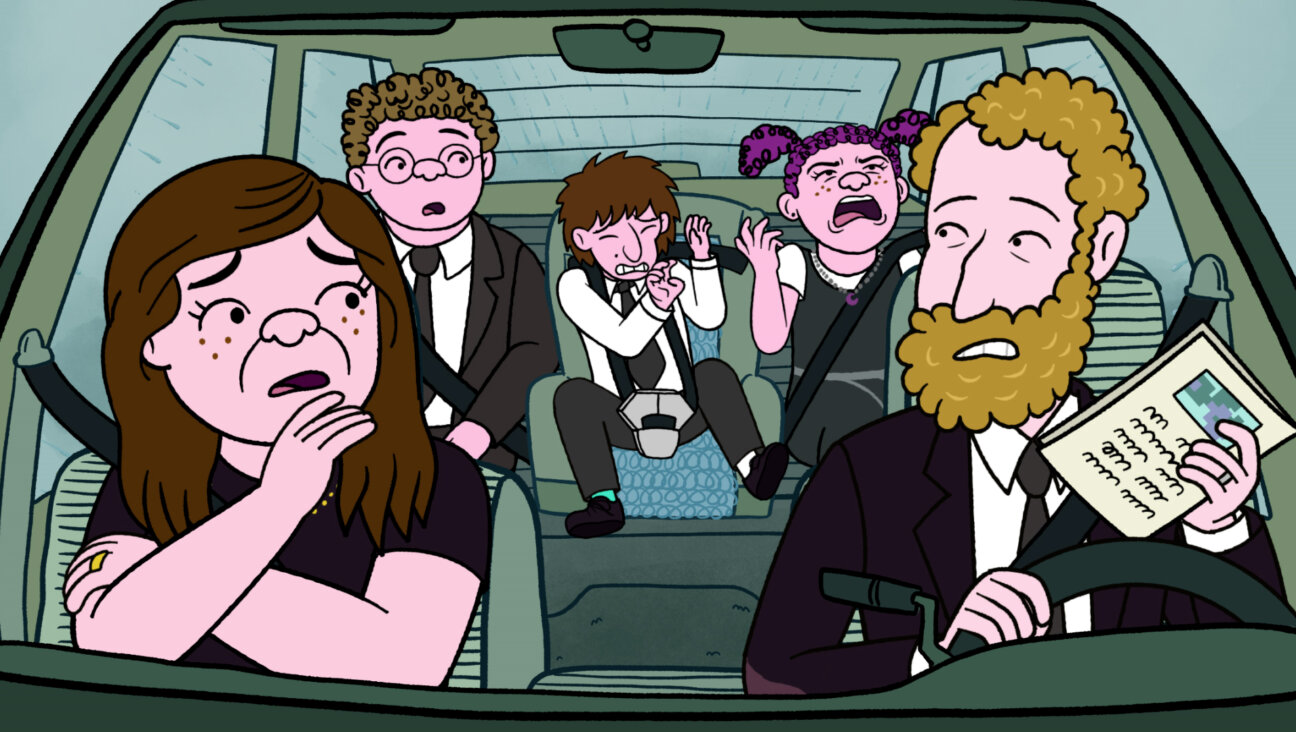Why an artist famous for illustrating the Haggadah is more relevant than ever
Through his work, Arthur Szyk fought against fascism and bigotry

Arthur Szyk’s 1942 ‘Satan Leads the Ball’ Courtesy of Irvin Ungar
For as long as I can remember, the great Polish-American Jewish artist Arthur Szyk (1894-1951) has held a proud place at my Passover seder, courtesy of his hauntingly dynamic illustrations of the story of Exodus in his best-known work, his 1940 Haggadah.
Szyk (pronounced Shik) was a self-described “soldier in art” who also weaponized his palette, pens and brushes to create dagger-like political cartoons and cover illustrations for mass circulation magazines in the 1930s and 1940s. His caricatures of Hitler, Mussolini Hirohito, and other Axis leaders, often pictured alongside ghoulish skeletons, had a common goal: fight Fascism, combat rampant antisemitism, save Jews from Hitler’s Holocaust, and advocate for a Jewish homeland in Israel.
Having found refuge from Nazi Europe in the United States in 1941, he never stopped waving his artistic flag to cheer American democracy. At the same time, as someone who himself had been persecuted in Nazi Europe, he also wielded his art to blast racism and boost civil rights. One of his cartoons depicted a Black soldier wearing the US Army’s Purple Heart as he finds himself kneeling, arms tied behind his back, held at gunpoint by a KKK member. The caption reads, “Do not forgive them, for they know what they are doing.”

And beyond the rage at injustice, there was still another side to Szyk’s artistry: his charmingly evocative, Medieval-flavored illustrations of Hans-Christian Andersen’s fairytales.
“Arthur Szyk is the artist of the Jewish people,” Irvin Ungar, a Szyk expert who is delivering a four-part lecture series on the artist’s life and work at New York’s Museum of Jewish Heritage, told me. “He advocated for the Jewish people and he was embraced by Jews of all segments of the Jewish community, secular and religious, left and right.”
The work of Szyk, who was born 130 years ago, is currently in the midst of a renaissance of interest, which began with the Taube Philanthropies 2017 donation of its extensive Taube Family Arthur Szyk Collection to The Magnes Collection of Jewish Art and Life at the University of California, Berkeley. The entire cache of work (consisting of approximately 450 items) has been catalogued and is now available online.
More recently, In Real Times: Arthur Szyk — Artist and Soldier for Human Rights, an exhibition that originated at the Magnes in 2021-2022, has traveled to the National World War II Museum in New Orleans, and the Fairfield University Art Museum in Connecticut.

Szyk’s work is composed of “multi-layered aesthetics,” Magnes Collection curator Francesco Spagnolo said. “We see him deploying artistic techniques that go back to the early modern period, including the Medieval ages and Medieval miniatures as well as Renaissance portraits.” His work can be secular — as in his illustrated version of The Canterbury Tales and his fairy tale illustrations. He also did not shy away from addressing global political affairs, not only in his anti-Fascist works but also in his and stamp designs celebrating the nations that joined he U.N. at the end of World War II. At the same time, Spagnolo said, he was, “lso very well versed in Jewish texts and their visual interpretations.” In all these ways, “Szyk was a citizen of the world.” And perhaps even more to the point, the times Szyk lived in can eerily parallel the current challenges to democracy in our country and around the world, giving Szyk’s work a renewed global resonance.
There’s also another parallel. “Cartoons and magazine covers in the 1930s and 1940s were the most globally circulating images of the time,” Spagnolo says. In the same way that those images propelled the media of instant communication of that era, so do the instantly communicated images on Instagram today. In other words, Szyk’s work is well poised to be used today in the fight against antisemitism, fascism and bigotry.
Irvin Ungar’s four-part lecture series commemorating the 130th anniversary of Arthur Szyk’s birth is being held at the Museum of Jewish Heritage: A Living Memorial to the Holocaust.
















